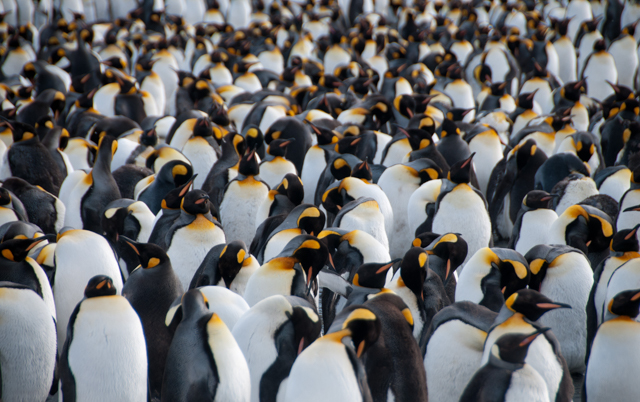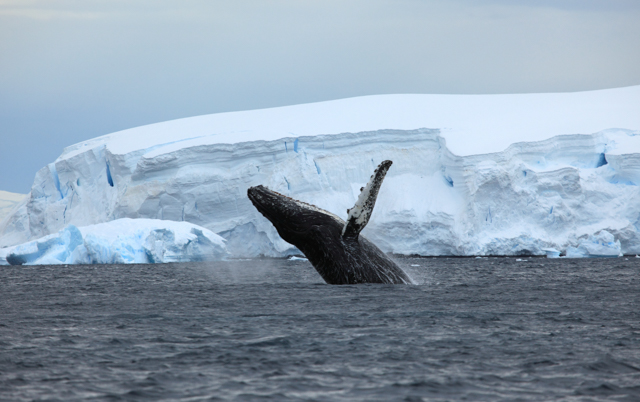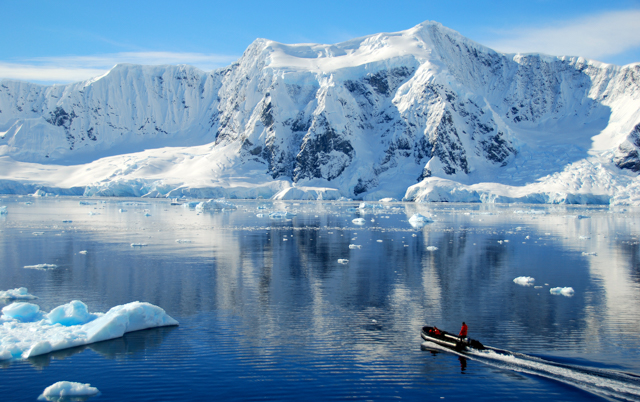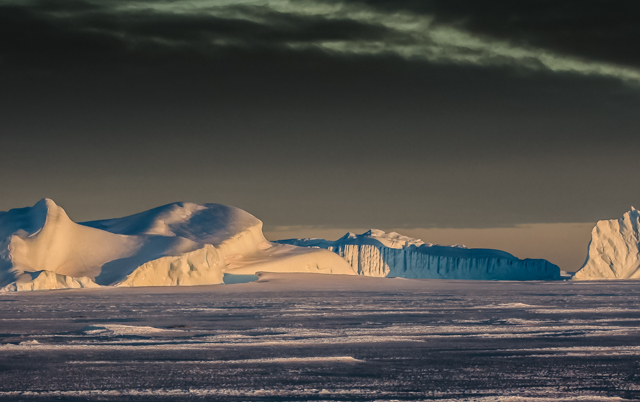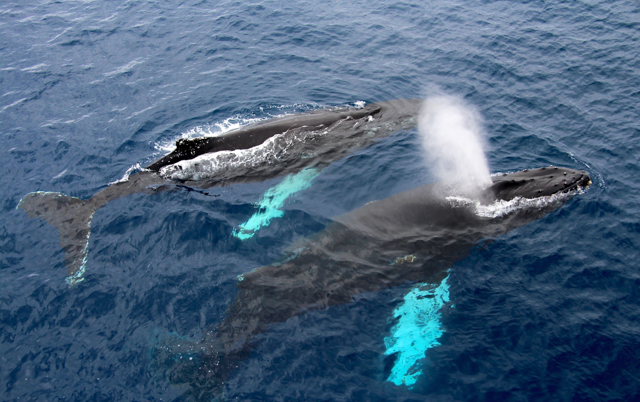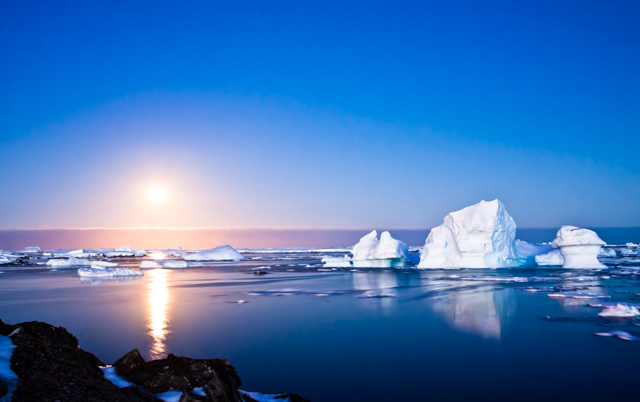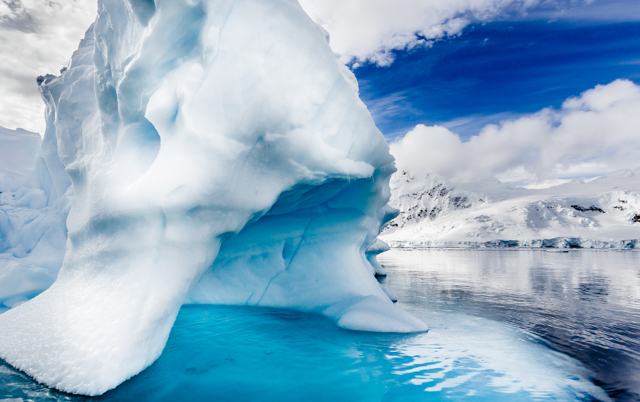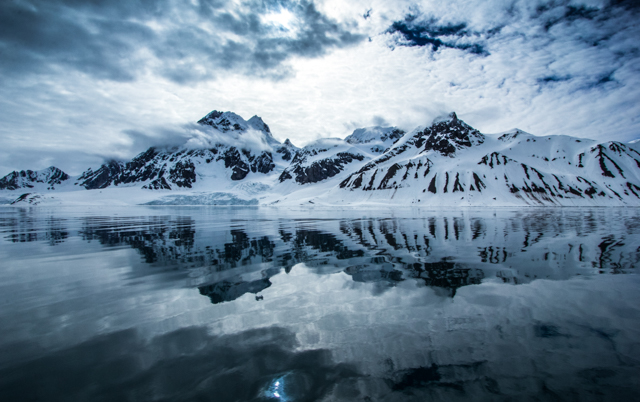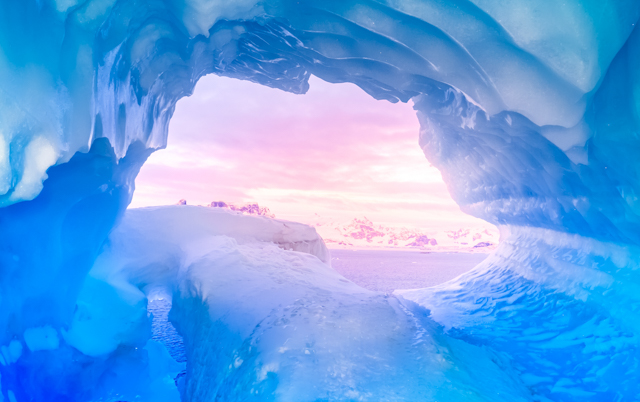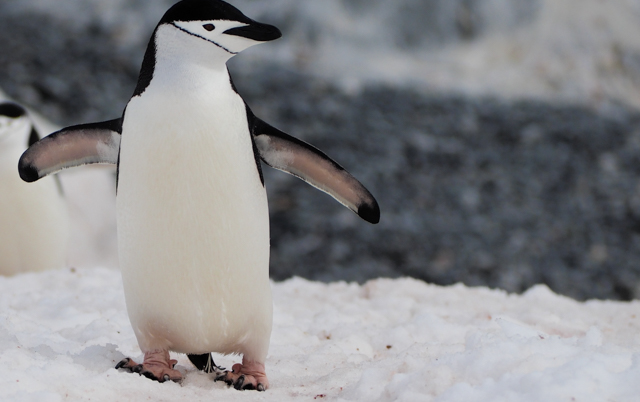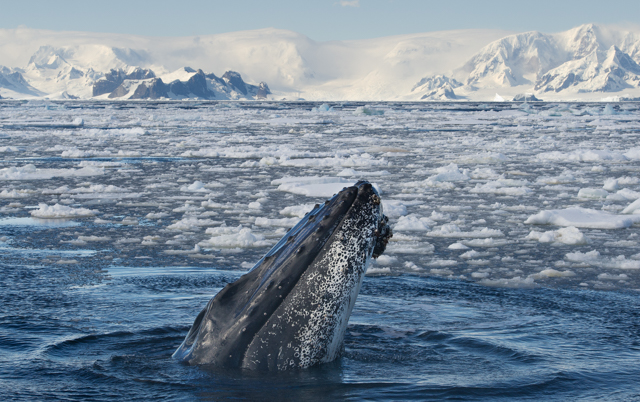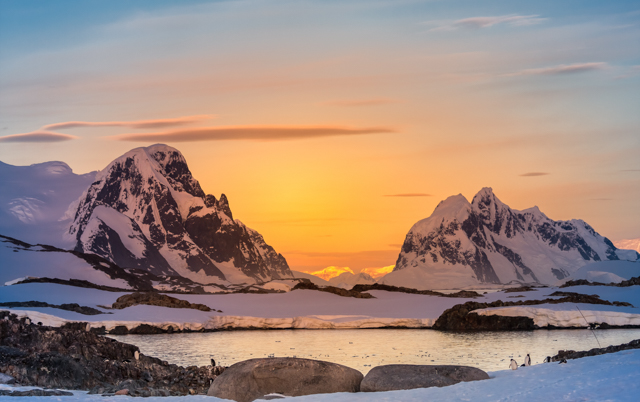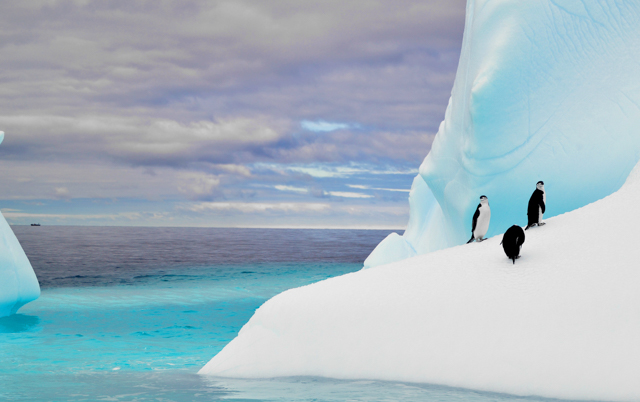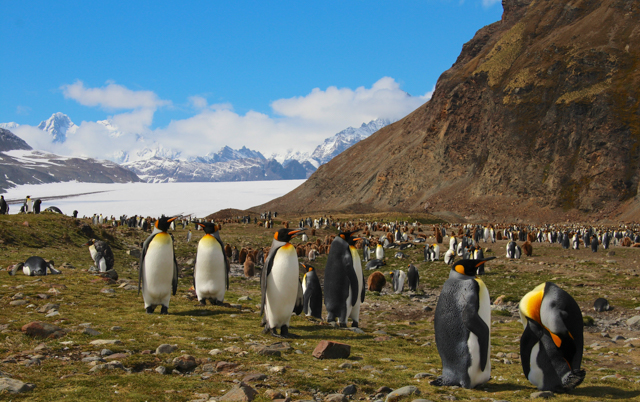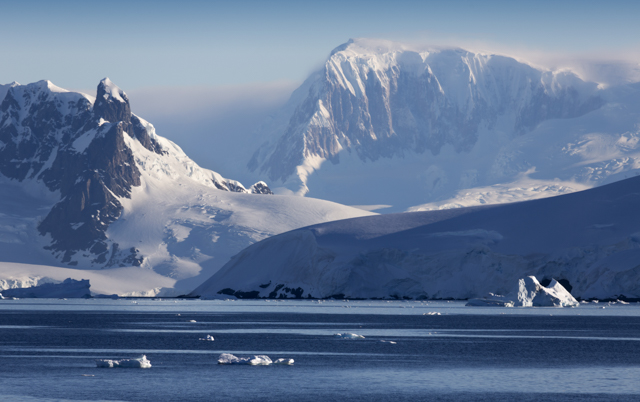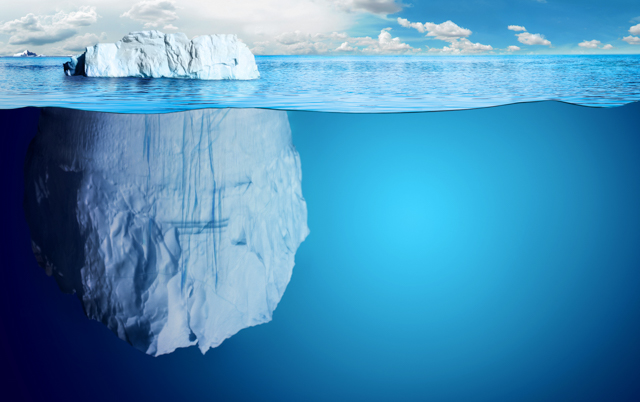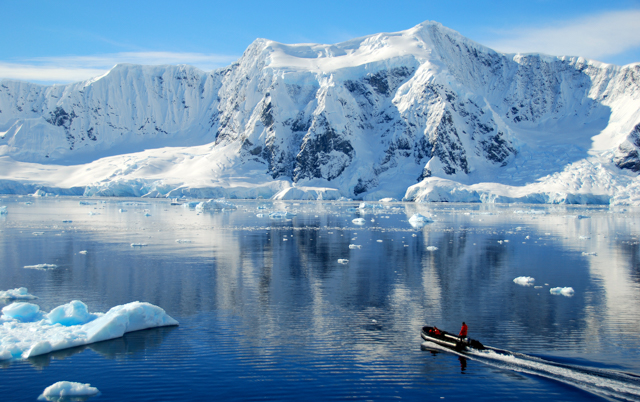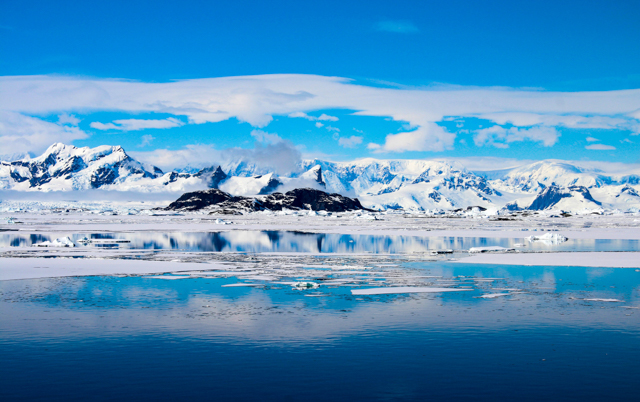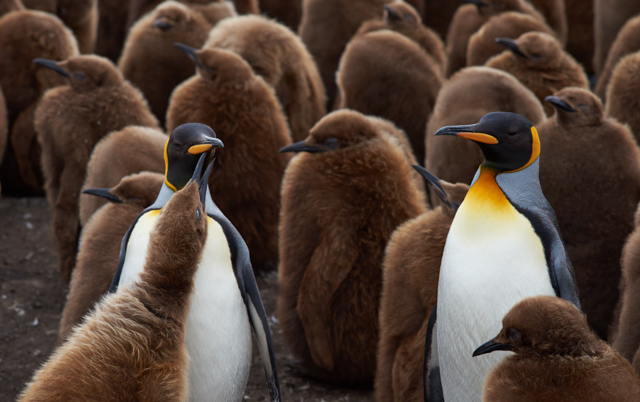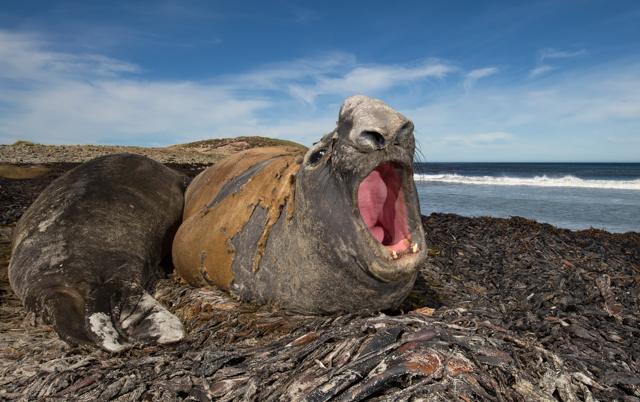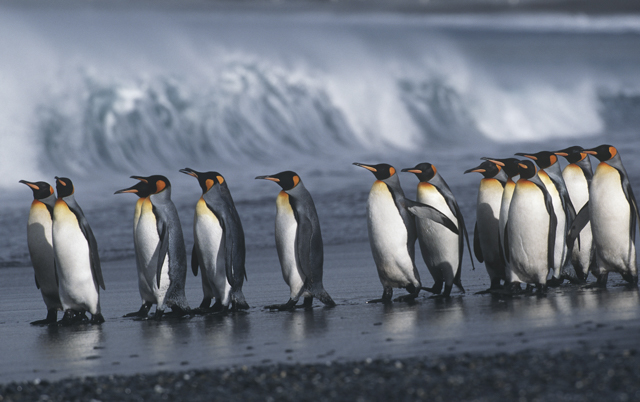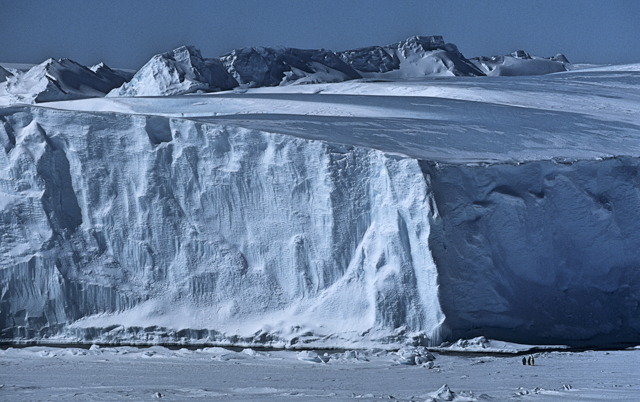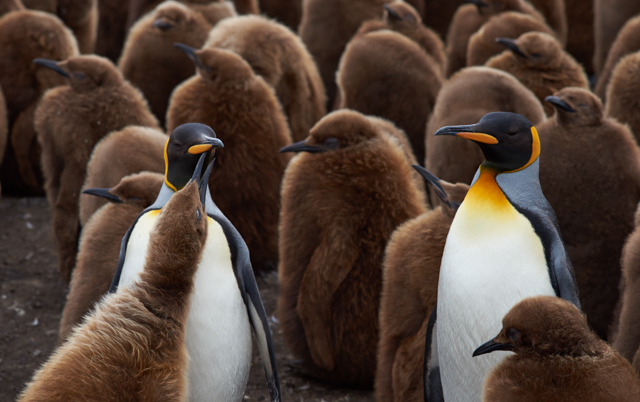Go beyond the Antarctic Circle, at the latitude of 66° 33’ 39’’.
Beyond the Polar Circle
Luxury Ship: Le Boréal
Length: 16 Nights
From Ushuaia, you will set sail aboard Le Soléal, for a17-day expedition cruise to the heart of a universe that is out of this world.
After having discovered the Falkland Islands, and their unique panoramas of hills and moors, you will sail in the waters of South Georgia.
This sub-Antarctic region offers a wide variety of landscapes, between long mountain chains and black sandy beaches, where huge colonies of King Penguins have taken refuge. Le Boréal will then sail south to reach the Antarctic Peninsula. Floating ice floes, tabular icebergs, and high snow-capped peaks: you will discover an enchanting polar desert. Finally, you will cross intothe mythical Antarctic Circle and will enter regions that are very infrequently visited, at the very end of the world – a rare and very moving sailing experience.
Itinerary in Brief
Day 1 Fly Buenos Aires to Ushuaia, Argentina
Day 2-3 New Island and Grave Cove, The Falkland Islands
Day 4-5 At Sea
Day 6 Salisbury Plain, Fortuna Bay and Stromness, South Georgia Island
Day 7 Saint Andrews Bay and Grytviken, South Georgia Island
Day 8 Gold Harbour and Cooper Bay
Day 9-10 At Sea
Day 11 Elephant Island
Day 12 Astrolabe Island
Day 13 Neko Harbour and Petermann Island
Day 14 Antarctic Polar Circle
Day 15-16 Drake Passage
Day17 Fly Ushuaia to Buenos Aires
Detailed Itinerary
Day 1 Fly Buenos Aires to Ushuaia, Argentina
Depart Buenos Aires on an early flight to Ushuaia. Capital of Argentina's Tierra del Fuego province, Ushuaia lies in a bay opening into the Beagle Channel at the country's southernmost tip. Its colourful houses are framed against towering mountains, snow-capped in winter and summer alike. Downtown, the End of the World Museum showcases Tierra del Fuego's natural and indigenous history. A ride on the heritage railway is an exciting excursion into the Tierra del Fuego National Park, while a cruise on Ushuaia Bay is the perfect way to spot sea lions and Magellanic penguins.
Day 2-3 New Island and Grave Cove, The Falkland Islands
Sail to the Falkaland islands. First visit New Island with its distinctive jagged relief is located on the western edge of the Falkland Islands and is home to a tiny village of two families. Step onto the golden sand of its flower-lined beaches, beside which an old stone house still stands, and you'll feel like you've entered a natural paradise. A narrow pathway weaves around typical Falkland moorlands. Follow it and in under 20 minutes you'll find yourself at the heart of a colony of southern rockhopper penguins, black-browed albatross and imperial shags. It's the perfect opportunity to watch the albatross swoop down from the cliffs and skim the waves that crash against the rocks on the exposed side of the island.
Make your way through the turbulent Woolly Gut strait and emerge in the stillness of Grave Cove. Located in the northern edge of the Falkland Islands, this bay owes its name to the vestiges of whalers’ graves that overlook the beach. As you step off the boat and onto the white-sand beach, you might find yourself escorted by a few hospitable Commerson's dolphins, elegantly adorned in black and white. A stroll along the grassy dunes will lead you to a vast plain of lush green grass, tended by a few sheep. On the other side of the island you'll find one of the largest gentoo penguin colonies in the area. With some luck, you'll also glimpse a sea lion scouring the waves for his next meal.
Day 4-5 At Sea
Leave the Falklands behind and set course south east for remote South Georgia.
Day 6 Salisbury Plain, Fortuna Bay and Stromness, South Georgia Island
Salisbury Plain is home to one of the most unforgettable natural vistas of South Georgia. Formed by the retreat of Grace Glacier, the same majestic peaks that once awed Shackleton still tower over the surrounding land. The island's bluish landscape exudes the magnificence and beauty of unspoilt nature. At the heart of this wild refuge, on the beaches of the bay, lies a colony of 250,000 king penguins. Amidst this sea of black and orange heads, fur seals and their young can be spotted nosing their way through the crowd. Under the pale austral sunlight that reflects off of the plain, flocks of birds are carried by the winds in a graceful show of nature's wonder.
Situated at the foot of sharply-rising mountains, Fortuna Bay is a truly dazzling vision to behold. You’ll marvel at a panorama of cliffs rising up from the icy waters and small streams fed by melting mountain snow meandering through vast green plains. The bay itself bows inward to form a perfect crescent, indented by a torrent. During your excursion, you can follow in the footsteps of Ernest Shackleton or even encounter the 50,000 king penguin couples who call the island their home and whose densely-packed silhouettes form a remarkable silver swath with a sprinkling of brown and bright orange.
In May 1916 after a perilous two-week journey on the James Caird followed by an hours-long trek across South Georgia, Sir Ernest Shackleton arrived in Stromness. There, at long last, he found the help needed to rescue his men stranded on Elephant Island. A former Norwegian whaling station, Stromness is now off limits to visitors. Crumbling pieces of abandoned buildings can be swept up by the wind, posing a danger for visitors who get too close. From your Zodiac®, however, you'll still get a good glimpse of the island's fur seals, who have completely reclaimed the beach and village.
Day 7 Saint Andrews Bay and Grytviken, South Georgia Island
Facing out towards the tempestuous Atlantic Ocean, you'll safely disembark along Saint Andrews Bay with the assistance of your naturalist guides. This bay bears a gift that is sure to enchant photographers. From the bay's long grey-sand beach, home to abundant fur seals and elephant seals, you can easily access a vast glacial trough bordered by steep mountainsides and enclosed by Ross Glacier. Here, at the heart of this valley, lies the climax of your visit: the largest colony of king penguins on the South Georgia Islands. You'll be witness to a surreal visual and auditory experience: entire hillsides covered with adult penguins dutifully going back and forth from land to water in order to feed their young.
The Grytviken stopover is a highlight of South Georgia Island. This former whaling station, now a ghost town, is set against a serene backdrop of ochre-coloured earth. Vestiges of the whaling industry are still very much present, particularly old whale bones and remnants of shipwrecks. Grytviken's other historical point of interest is the grave of famous adventurer Sir Ernest Shackleton. During the legendary Endurance expedition (1914-1917) Shackleton and his men survived against all odds after having been trapped in pack ice for several months. The series of exploits leading to their rescue will remain forever etched in the annals of Antarctic exploration.
Day 8 Gold Harbour and Cooper Bay
Majestic glaciers with a bluish sheen, waterfalls that reflect the rays of the setting sun, pitch-black volcanic sand beaches: these are just a few of the wonders to be found in Gold Harbour's landscape. This natural gem is blanketed by bright green tussocks and framed by snow-capped peaks. On this island where summer days are endless, the wildlife stays up with the sun. Fur seals, elephant seals and king penguins move about the island like tiny black dots along the landscape. Those humans who enter this kaleidoscope of colours and sensations do so as privileged and tolerated observers of the austral wildlife.
Take a seat in one of our Zodiac® dinghies and head out to explore Cooper Bay, near Gold Harbour. It was named after the first lieutenant of the famous sailor, Captain James Cook, and the bay offers a quite unexpected sight, with long basalt canyons forming high cliffs that loom over a turquoise-blue water. In the centre of the bay, a magical atmosphere reigns when just a few rays of sunshine pierce the gauzy layer formed by the morning mist. The craggy coastlines are home to colonies of macaroni penguins who pay close attention to the arrival of our tiny crafts.
Day 9-10 At Sea
Sail South to the Antarctic Peninsula.
Day 11 Elephant Island
This mythic island, one of the northernmost of the South Shetland Islands, served as a refuge for part of the crew of Shackleton's Endurance expedition. From there, the James Caird, a rescue boat from the Endurance, embarked on the perilous journey to South Georgia to rescue the men left behind. All survived despite the inhospitable nature of the island. Indeed, Elephant Island's steep, ice-covered mountainsides bear no trace of man. Yet these rough conditions haven't deterred a colony of chinstrap penguins from settling at Point Wild or gentoo penguins and elephant seals from taking shelter at Cape Lookout.
Day 12 Astrolabe Island
This small, rugged island was discovered by French explorer Jules Dumont d'Urville and named after the ship aboard which he led multiple expeditions. Rogach Peak, the highest point on the island with an elevation of over 500 metres, offers visitors an impressive view of the surrounding blue icebergs. Though excursions are not always possible on this rugged terrain, a Zodiac® tour will allow you to glimpse the local inhabitants, from numerous chinstrap penguins to Weddell seals.
Day 13 Neko Harbour and Petermann Island
A little corner of paradise in the shadow of a towering glacier, Neko Harbour is without a doubt one of the most beautiful sites on the Antarctic Peninsula. It was discovered by Belgian navigator Adrien de Gerlache during his 1897-1899 expedition. Mountains, ice and wildlife combine to form a truly unique landscape. Animals are as abundant as they are exotic: among others, you'll encounter seabirds (gulls, Cape petrels, cormorants) and marine mammals (seals, orcas and other whale species). Head out on a Zodiac® excursion to get up close to the icebergs, stop over near a penguin colony, watch a leopard seal sunbathe between dives and enjoy an impromptu aerial show from passing Antarctic terns.
Located at the end of the famed Lemaire Channel, Petermann Island played a key role in the history of Antarctic exploration. In the early 20th century, French explorer Jean-Baptiste Charcot chose to ride out his second winter aboard the Pourquoi Pas? on the shores of this round, little island. The initials ‘PP’, engraved on the rocks by Charcot's crew, can still be seen at the spot where the ship was anchored. Today, the island is a privileged refuge for a rich and diverse fauna: numerous gentoo penguins, chinstrap penguins, imperial shags and other bird species settle here.
Day 14 Antarctic Polar Circle
Head further south to cross the Antarctic Polar Circle today
Day 15-16 Drake Passage
If there is one place, one sea, one waterway dreaded by tourists, researchers and hardened seafarers alike, it is undoubtedly Drake Passage. Situated at the latitude of the infamous Furious Fifties winds, between Cape Horn and the South Shetland Islands, it is the shortest route to Antarctica. Seasoned navigators will tell you that you must earn your visit to the White Continent! As a convergence zone where cold currents rising up from the South Pole meet warmer equatorial water masses, Drake Passage harbours a very diverse marine fauna. Don't forget to look to the sky to catch a glimpse of elegant albatross and Cape petrels, playfully floating about in the wind around your ship.
Day17 Fly Ushuaia to Buenos Aires
Disembark from your ship at Ushuaia port this morning and transfer to the airport for your domestic flight to Buenos Aires.
